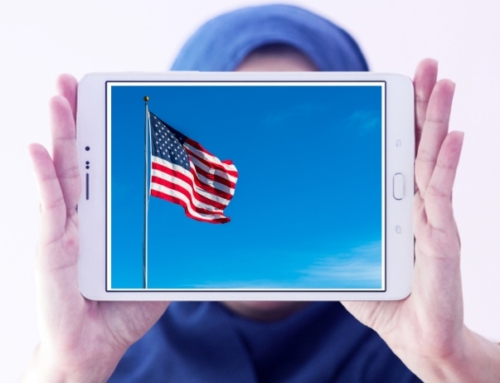By: Farhana N. Shah
Creating a Safe And Inclusive Environment for Muslim Students
Educators have a tremendous responsibility in ensuring all students are safe from maliciousness and hate. In our current climate there is a disturbing trend of Islamophobia that may not be addressed in schools. The rise and spread of Islamophobia are generating a different landscape for Muslim children growing up today. Anti-Muslim rhetoric and attitudes are dangerous in schools. Students are often made to feel unwelcome by constantly being asked where they are from or being complimented on their well-spoken English or young being labeled as terrorists.
Supporting Muslim Students in Public Schools
It is unfortunate that many Americans do not have an accurate understanding of Islam and Muslims. Much of their information comes from social media or politicians who seek to demonize Muslims. It is vital that public-school teachers learn about the struggles of their students that might impact their education. One of the challenges Muslim students face is the constant pressure to defend and explain themselves when they are singled out in classes. For this reason, teachers should invest the time to learn about them. Like other religious groups, Muslims are diverse and should not be subjugated to a stereotype.
Creating an Inclusive Classroom
This article will provide some suggestions for educators that will help make classrooms more inclusive and create a safe space in which all cultures, ethnicities, and beliefs are respected.
Building Relationships
Start with team builders (activities that collaboration and social relations) to get to know each other the first week of school, then maybe one each quarter as new students enroll throughout the school year.
Highlighting Commonalities
Show commonalities between cultures and faiths; how we are more similar than different through commonly used words and language.
Cultivating Communication
Keeping communication lines open between school and home.
Recognizing Muslim Holidays
Teachers can learn how to pronounce and greet them when the two Muslim holidays (Eid al-Fitr and Eid al-Adha) fall during the school year. Teachers should also keep in mind that Muslims do not celebrate Christian holidays like Christmas, and therefore may feel left out during activities in December.
Strategies for Teachers
Here are some ways teachers can begin implementing resources at the classroom level based on their contents:
Social Studies or World Studies:
- Introduce the Islamic calendar with a focus on the month of Ramadan and the two major holidays. Also, share, like Judaism, Islam follows the lunar calendar. Chinese culture also uses a lunar calendar. Understanding the difference between the lunar and Gregorian calendars will help students with an understanding of why Ramadan dates change each year
- Islamic history timeline: when and how it began and important names and figures in its history
- Methods Islam is practiced in various parts of the Muslim world. This will help clarify the differences between the culture of the country and the actual faith
- American History: many African slaves were Muslim scholars and were highly educated people
- Include videos about Muslim figures or characters: A Prince Among Slaves, Muhammad: A Legacy
- Share a map of Muslim majority countries
- Highlight Islam’s influence on Western cultures
- When speaking of Martin Luther King Jr, also make mention of Malcolm X and his influence in the civil rights movement
- Take students on field trips to a local mosque, cultural centers, and Islamic heritage museums
- Introduce important Islamic terms to eliminate biases and bullying/harassment of Muslim students in public schools: Jihad, Sharia, Shia, Sunni, etc
- Myth vs. Facts: Islam is violent; all Muslims are Arabs/Middle-Easterners; Muslim women are oppressed and other inaccurate statements. Teachers can include real data to show these beliefs shared by the Western media is untrue and causes harm to Muslim students
English/Reading:
- Consider novels or books written by Muslim authors
- Muslim narratives by men and women in the past and present
- Explain which words originated from Arabic and how they are used today: i.e. zero, lemon, chemistry or many more
- Poetry by Rumi Jamaluddin and other Muslim poets in the USA and around the world
Science
- 1001 Islamic inventions
- Muslim inventors and their backgrounds
- Coffee and its origin in the Muslim world
- Muslim contribution to medicine
Math
- The invention of Algebra and the concept of the number zero
- Muslim mathematicians
- Use of Muslim names in word problems to be inclusive of all learners
Art And Music
- Arabic Calligraphy
- Arts in the Muslim World
- Musical instruments invented by Muslims
- Explain why mosques and Islamic art do not have pictures in them, or why there is no picture of Muhammad
Farhana N. Shah is a Content Specialist in Montgomery County Public Schools. She holds a master’s degree in Education along with multiple certifications. Her career spans over fifteen years of teaching in the classroom, leading teams, evaluating teachers and providing professional development in the United States and abroad.
Got Questions?
We have Answers. Get in touch now.








